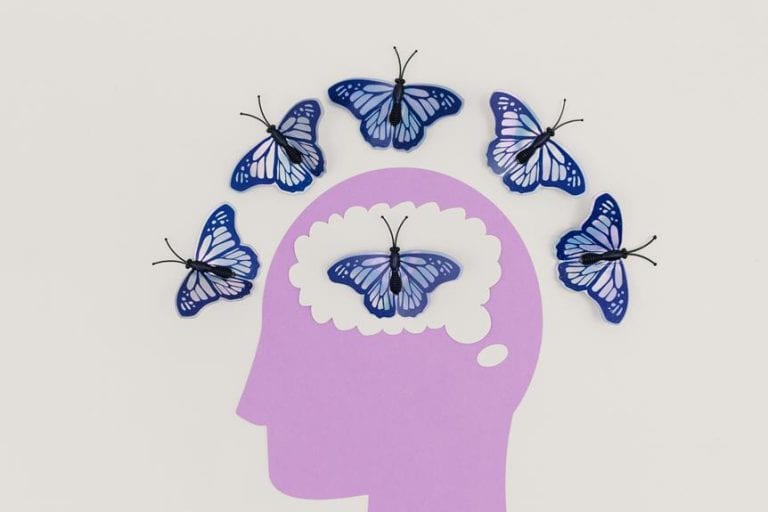Passive Suicidal Ideation Adhd
Feeling like a ship adrift at sea, steering through the complexities of ADHD and passive suicidal ideation can be overwhelming. The subtle yet persistent nature of these thoughts can weigh heavy on one's mind, impacting daily life in unexpected ways.
Exploring the nuances of how ADHD intertwines with passive suicidal ideation sheds light on a critical aspect of mental health that requires nuanced understanding and targeted interventions. Understanding this intricate relationship can lead to more effective support and strategies for individuals grappling with these challenges.
Key Takeaways
- Passive suicidal ideation is common in ADHD due to executive functioning challenges.
- ADHD increases the risk of depression and amplifies emotion regulation deficits.
- Tailored interventions combining therapy and medication are crucial for addressing passive suicidal ideation in ADHD.
- Early recognition of symptoms and proactive support systems are essential for managing ADHD-related passive suicidal ideation.
Understanding Passive Suicidal Ideation

In understanding passive suicidal ideation, one must grasp the subtle yet significant distinction it holds from active suicidal thoughts. Passive suicidal ideation involves non-specific thoughts and feelings about wanting to die, without specific plans or actions. Unlike active suicidal ideation, there's no immediate intent or preparation to carry out the act. Individuals experiencing passive suicidal ideation may exhibit symptoms such as feeling hopeless, withdrawn, and engaging in risky behaviors. This phenomenon is particularly relevant in the context of ADHD, where challenges in impulse control and emotional regulation can exacerbate feelings of hopelessness and despair.
Addressing passive suicidal ideation in individuals with ADHD requires a thorough approach to mental health. Chronic anxiety, often intertwined with ADHD, can amplify passive suicidal thoughts, highlighting the importance of early intervention. Seeking help from mental health professionals is vital in providing support, therapy, and strategies to manage these distressing thoughts effectively. By recognizing and addressing passive suicidal ideation promptly, individuals with ADHD can work towards improving their mental well-being and overall quality of life.
ADHD and Suicidal Ideation Connection

As we explore the connection between ADHD and suicidal ideation, it's important to take the risk factors that may contribute to these thoughts. Understanding how ADHD symptoms can impact one's mental health is essential in developing effective treatment strategies.
Building strong support systems and seeking professional help can play a crucial role in managing the complexities of ADHD and its potential link to suicidal ideation.
ADHD Risk Factors
Understanding the complex relationship between ADHD and suicidal ideation requires a nuanced exploration of the risk factors involved, particularly the impact of emotion regulation deficits and their connection to depression. When considering ADHD risk factors, it's essential to acknowledge:
- ADHD and Depression: ADHD increases the risk of depression, which is a significant factor in suicidal ideation.
- Emotion Regulation Deficits: Difficulties in regulating emotions, like accepting negative feelings, can amplify the effects of ADHD on depression and suicidal ideation.
- Research Insights: Studies with psychology students underscore the roles of emotion regulation and depressive symptoms in the context of ADHD and suicidal ideation.
- Interplay Importance: Understanding how ADHD, emotion regulation, and depression interact is vital for addressing the risk of suicidal ideation in individuals with ADHD.
Treatment Options
Exploring treatment options for individuals with ADHD experiencing passive suicidal ideation involves a combination of medication and therapy to address underlying emotional challenges effectively.
Cognitive-behavioral therapy (CBT) is particularly useful in targeting negative thought patterns and developing coping mechanisms to manage suicidal ideation.
Collaborative care models, which encompass a team of psychiatrists, therapists, and primary care providers, offer thorough support for individuals dealing with ADHD and suicidal thoughts.
Medications such as antidepressants or mood stabilizers may be prescribed to help regulate mood and alleviate symptoms of depression and suicidal ideation.
Regular monitoring and follow-up by mental health professionals are essential to guarantee the effectiveness of the treatment plan and promptly address any emerging concerns.
Support Systems
Individuals with ADHD facing passive suicidal ideation often benefit greatly from establishing robust support systems tailored to their unique needs and challenges. When moving through emotional distress and suicidal thoughts, creating a strong support network is critical.
Here are some key elements for effective support systems:
- Regular Check-ins: Having consistent check-ins with friends, family, or support groups can provide a sense of connection and understanding.
- Therapeutic Interventions: Seeking professional help from mental health professionals, such as therapists or counselors, can offer valuable strategies for managing emotions.
- Self-Care Practices: Engaging in self-care activities like mindfulness, exercise, or hobbies can help in coping with stress and promoting mental well-being.
- Emergency Plans: Establishing clear emergency plans and hotlines for immediate assistance during moments of crisis is essential in ensuring safety and quick intervention.
Symptoms of Passive Suicidal Ideation

As someone who's observed symptoms of passive suicidal ideation, it's essential to pay attention to warning signs like feelings of hopelessness and worthlessness.
These indicators can greatly impact an individual's daily life, leading to increased isolation and disinterest in activities.
Seeking professional help is vital to address these symptoms effectively and provide appropriate support.
Warning Signs to Watch
When observing teenagers for signs of passive suicidal ideation, pay close attention to changes in their social interactions and emotional well-being. Recognizing the warning signs early can help provide necessary support and intervention. Here are some key signs to watch out for:
- Increased isolation and withdrawal from social activities
- Feelings of hopelessness, worthlessness, or being a burden
- Numbness, disconnection, and loss of interest in previously enjoyed activities
- Expressing thoughts of not wanting to exist or feeling like life isn't worth living
Being vigilant about these emotional signs and behavioral indicators can aid in identifying and addressing passive suicidal ideation in adolescents promptly. Remember, early intervention is important in assisting teens struggling with these challenges.
Impact on Daily Life
Observing the impact of passive suicidal ideation on daily life reveals a significant disruption in one's emotional and social functioning. Individuals with ADHD experiencing these symptoms may find themselves struggling with daily tasks, feeling emotionally numb, and withdrawing from social interactions.
The persistent thoughts of death and worthlessness can lead to a sense of isolation and difficulty in engaging with others. This emotional burden can make decision-making challenging and hinder one's ability to function effectively throughout the day.
Recognizing these signs of passive suicidal ideation is critical to providing timely intervention and support. Addressing these symptoms promptly can help prevent further distress and make sure the individual receives the necessary assistance to cope with these overwhelming feelings.
Seeking Professional Help
Seeking professional help for passive suicidal ideation in individuals with ADHD necessitates prompt consultation with mental health professionals experienced in addressing suicidal thoughts.
When symptoms like feeling hopeless, withdrawn, and overwhelmed arise, reaching out to a mental health provider is vital for timely intervention.
Professional assistance can guide individuals with ADHD through the despair and hopelessness associated with passive suicidal ideation.
Tailored treatment options, such as therapy and medication, can effectively target passive suicidal thoughts.
Early intervention by seeking help from mental health professionals greatly lowers the risk of passive suicidal ideation progressing to active suicidal behavior in those with ADHD.
Impact of ADHD on Suicidal Thoughts

In individuals with ADHD, the impact on suicidal thoughts is an important aspect that necessitates careful consideration and targeted intervention strategies. ADHD poses an increased risk of suicidal ideation, with studies highlighting a higher prevalence of passive suicidal ideation in individuals with this condition. The challenges of managing intrusive and negative thoughts, often associated with ADHD, can exacerbate these feelings.
Executive functioning difficulties, a common feature of ADHD, have been directly linked to passive suicidal ideation, further emphasizing the complex interplay between mental health and ADHD symptoms.
Understanding how ADHD influences suicidal thoughts is important for providing appropriate support and interventions. By recognizing the unique struggles individuals with ADHD face, such as executive functioning deficits and intrusive thoughts, healthcare professionals can tailor interventions to address these specific needs effectively. Acknowledging the impact of ADHD on suicidal ideation is an important step towards enhancing mental health outcomes for individuals grappling with this condition.
Addressing Passive Suicidal Ideation in ADHD

Passive suicidal ideation in individuals with ADHD often stems from the overwhelming challenges posed by executive functioning difficulties. This form of ideation can be distressing and may require professional intervention to address effectively.
When it comes to addressing passive suicidal ideation in ADHD, several key strategies can be beneficial:
- Seeking support from a mental health professional who's experienced in treating ADHD and suicidal ideation.
- Exploring treatment programs tailored to the unique needs of individuals with ADHD to manage passive suicidal thoughts effectively.
- Engaging in therapy sessions to develop coping mechanisms and improve emotional regulation.
- Considering medication options under the guidance of a healthcare provider to alleviate symptoms related to passive suicidal ideation.
Remember that managing passive suicidal ideation in ADHD requires a thorough approach that combines professional guidance, personalized treatment plans, and a strong support system.
Treatment Approaches for Suicidal Ideation

Addressing passive suicidal ideation in ADHD requires a thorough approach that integrates therapy and medication to target underlying mental health concerns effectively.
In the treatment of passive suicidal thoughts, individuals with ADHD can benefit from cognitive-behavioral therapy (CBT) to develop coping skills and manage negative thought patterns. Medications such as antidepressants or mood stabilizers may also be prescribed to stabilize mood and reduce symptoms of suicidal ideation in those with ADHD.
Additionally, creating a pivotal plan with specific steps to follow during moments of distress can be an important intervention strategy. Regular monitoring by mental health professionals is essential to track progress, adjust treatment strategies, and provide ongoing support for individuals with ADHD experiencing passive suicidal ideation.
Support Strategies for ADHD and Suicidal Ideation

To effectively support individuals with ADHD experiencing suicidal ideation, establishing a robust network of resources and seeking professional guidance are essential steps in managing their mental health. When addressing passive suicidal ideation in individuals with ADHD, it's important to take into account the following support strategies:
- Seek Help: Encourage the individual to reach out to mental health professionals or support hotlines for immediate assistance.
- Build a Support Network: Surround the individual with understanding family members, friends, or support groups to provide emotional support.
- Encourage Self-Care: Promote activities like exercise, meditation, or hobbies that can improve mental well-being and reduce the risk of suicidal thoughts.
- Address Comorbid Conditions: Make sure that any co-existing mental health issues, such as depression or anxiety, are also addressed in the treatment plan to effectively manage passive suicidal ideation in individuals with ADHD.
Frequently Asked Questions
What Counts as Suicidal Ideations?
When considering suicidal ideation, it's critical to recognize any thoughts of wanting to die, even if they're passive. Coping strategies, treatment options, risk factors, support systems, self-care techniques, and seeking help are crucial for addressing such concerns.
Does Having Suicidal Thoughts Mean You Have Depression?
When suicidal thoughts arise, it's important to recognize they can be linked to various factors beyond depression. Understanding mental health nuances helps in developing coping skills, prioritizing self-care, building a support system, exploring therapy options, and addressing the stigma surrounding such thoughts.
What Does a Hope Kit Contain?
A Hope Kit contains coping strategies, self-care tips, inspirational quotes, creative outlets, a support network, and positive affirmations. These items aim to provide comfort, encouragement, and a sense of support to individuals in need.
When Is Someone Considered Suicidal?
When is someone considered suicidal? Recognizing warning signs, seeking help, identifying risk factors, utilizing support systems, learning coping strategies, and exploring treatment options are critical steps in addressing suicidal ideation promptly to guarantee safety and well-being.
Conclusion
To sum up, managing passive suicidal ideation with ADHD can feel like trying to swim against a strong current. Seeking help and utilizing support networks is like finding a life jacket in the stormy sea of thoughts and emotions.
By addressing symptoms, seeking proper treatment, and practicing self-care, individuals with ADHD can find ways to manage their struggles and reduce the risk of suicidal thoughts.
Remember, you aren't alone in this journey.







